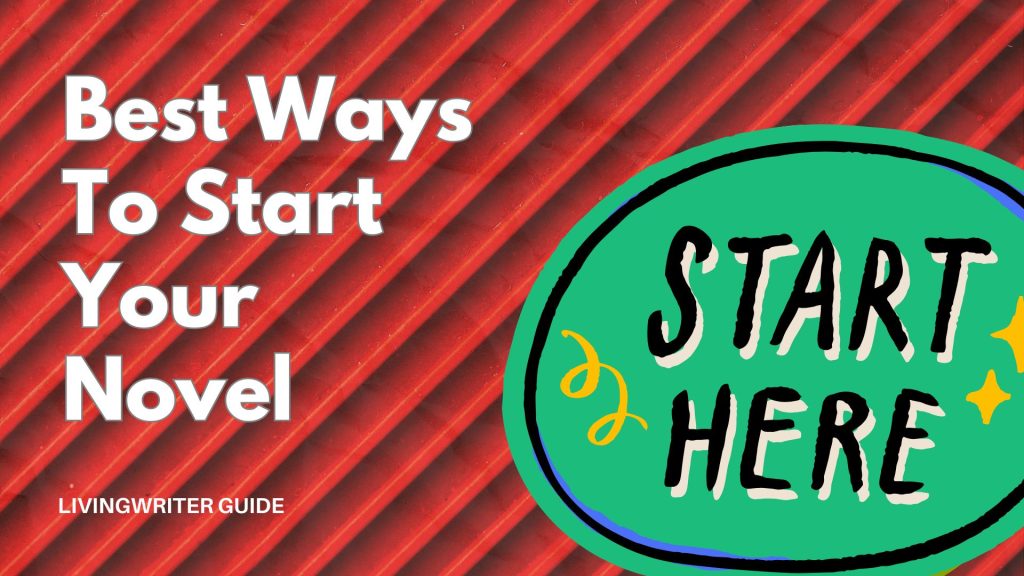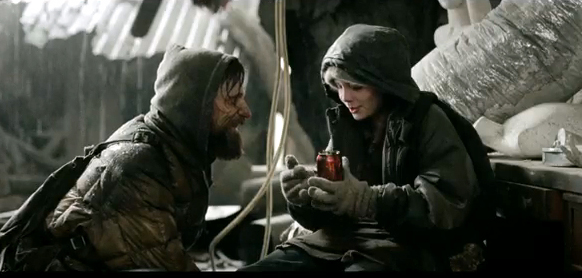Best Ways To Start A Novel – 8 Great Openings

The beginning chapter of your book might be the most important one in the entire book. Why? Because it’s going to be what makes readers decide if they want to keep reading. And you only get one chance to make a first impression. Today, I’ll be giving you the best ways to start a novel to ensure you grab your reader’s attention.
I have eight different tips (you won’t use all eight in your opening chapter, but any one of them will help to ensure that you’re starting strong and engaging readers from the very start of the book. So, without further ado, let’s get into the eight best ways to start a novel.
Table of Contents
Best Ways To Start A Novel
The best way to start your story may vary based on the story you’re telling. As I said, you won’t use every one of these tips at once. Instead, you’ll find one that works well with how your story starts and make sure all of the given elements that create a strong start are there in some way or another.
Three Types Of Conflict
Staring the story with some conflict may seem obvious and somewhat vague. Worry not; I promise I have something helpful. A great trick for chapter one conflict is to incorporate three separate angles of conflict – Public, internal, and conflict with others.
By using all three at once, you immediately begin to create a multifaceted plot, characters, and a dynamic world. When multiple conflicts converge, the stakes for your protagonist are significantly higher. Public conflict adds external pressure, while internal strife creates personal stakes.
Finally, conflict with others adds drama and tension to the story. This combined pressure makes the protagonist’s journey more compelling and urgent. If you create a web of conflict with many facets, your book will have a much stronger start than with only one or even two elements.
An example of this is George Orwell’s 1984.
- Public: Big Brother is oppressive and constantly monitors and controls citizens, which affects the entire public on a large scale.
- Internal: The protagonist, Winston, grapples with his rebellious thoughts and desires individually.
- With Others: Winston faces the constant threat of being caught and punished by the Thought Police. He has to traverse the oppressive reality, discern who he can trust, and avoid being prosecuted for his thoughts.
Start With A Decision
Opening your novel with a pivotal decision can instantly grab the reader’s attention and make them wonder what will happen as a result. This “wanting to see how the dust settles” propels the narrative forward and sets the stage without relying on things like action without much context.
Think of it this way: a story without a clear starting point is like a journey without a destination. A tough decision with some consequences provides that crucial direction. It introduces conflict and forces your protagonist to confront choices that will shape the course of their story.
A great example is an early line from Gone Girl by Gillian Flynn: “I should have gone to the police, of course. I should have gone to the authorities the moment I suspected what was happening. But I didn’t.” It immediately establishes guilt and suspense, highlighting the protagonist’s initial inaction and the potential consequences of that decision.
You May Also Like: How To Write Like Gillian Flynn
Set The Mood
The opening paragraphs of your book are the first interaction your reader has with the world of the novel. It can be a great place to give them a taste of what kind of book they can expect to read. This doesn’t have to go as far as world-building, which we’ll touch on later.
Instead, just be aware of how word choice and sentence structure change the mood. Deliberate use of certain words and synonyms will paint a picture of what the reader can expect. For example, the opening paragraph of The Road by Cormac McCarthy uses “dark” twice, then “darkness,” “grey,” and “cold.” Even without getting right into any conflict, you know the world is grim.

So, be purposeful with your language, and you can quickly establish an interesting mood for your work. Furthermore, short, choppy sentences can create a sense of urgency or tension, while longer, flowing sentences can evoke a sense of tranquility or dreaminess.
Start With World-Building
Usually, people advise getting into conflict as early as possible, but sometimes, it’s ok to open with subtle world-building through your characters. GRRM is a good example of this in A Game of Thrones. As I mentioned in my Fantasy Worldbuilding Like George R.R. Martin article, Martin is a master at world-building with his narrative.
For example, he doesn’t blatantly open A Game of Thrones by mentioning history, essential families, castles, magic systems, etc. Instead, he tells us that Westeros is a land where seven-year-olds can watch beheadings and are excited about it.
We’re also introduced very casually to several details – Bran’s age, the fact that there have been beheadings before this one, and a mention of nine years of summer. While these details aren’t essential to the scene, they start to lay the groundwork for the world without info dumping or jumping directly into a big action scene.
Start Fast
Sometimes, the most effective way to hook your readers is to plunge them directly into the chaos. Start with something crazy and then deal with its aftermath. Begin with an explosive, high-stakes scene that throws your protagonist (and the reader) into the deep end. This approach bypasses the need for lengthy exposition or setup, immediately generating intrigue and urgency.
The goal here is to create a “what just happened?” moment that compels the reader to keep turning pages. You can then gradually reveal the context and backstory as the narrative unfolds, keeping the momentum going.
Start With A Mystery
Intrigue doesn’t always have to stem from action. Even if your novel isn’t a mystery novel (in terms of genre), if you have an element that you can make people wonder about, that’s a great way to start. You can start with something mysterious and escalate it from there.
If a novel opens with a character waking up in a locked room with no memory of how they got there and a cryptic note in their hand, the immediate questions of their identity, location, and the meaning of the note create compelling questions the reader will want to solve alongside the protagonist.
Ground Large Events In The Personal
Taking a massive, world-altering event and immediately focusing on its impact on a single individual can create a powerful entry point for your reader. Even if the story unfolds on a grand scale (think a devastating war, a societal collapse, or the onset of a mysterious phenomenon), anchoring the initial perspective in one character’s experience grounds things and makes it relatable.
This allows you to show the broader implications through a personal lens, so that it feels tangible and emotionally resonant. By seeing the large event through the eyes of someone struggling to navigate its immediate consequences, readers gain an emotional investment that pure exposition often lacks.
An example could be, instead of starting with a sweeping overview of the zombie apocalypse, begin with a mother barricading her windows as she desperately tries to protect her child from the groaning hordes outside. The global catastrophe is immediately felt through her fear and actions.
Offer Someone To Root For
Immediately presenting a character that readers can empathize with, understand, or even admire is a highly effective way to draw them into your story. This doesn’t necessarily mean your protagonist needs to be flawless; in fact, relatable flaws can often make them even more compelling.
You May Also Like: How To Write Female Characters (As A Male Author) – 9 Key Tips
To Kill a Mockingbird does this well by immediately drawing readers to young narrator Scout Finch through her innocent perspective and early hint of vulnerability due to her mother’s death. Her distinct voice and the established, albeit incomplete, family unit invite empathy and investment in her story from the very first page.

The key is to establish their core desires, their vulnerabilities, or their inherent goodness early on, giving the reader a reason to care about their fate and become invested in their journey. By offering someone to root for, you create an emotional hook that encourages readers to turn the page and discover what will happen to this character they’ve begun to connect with.
Conclusion
There you have it, my friends, my opinion on the best ways to start a novel. While these are by no means the only way to start a novel, they’re all great options for writers who want to ensure they have a strong start that makes readers want to continue reading.
Now all that is left to do is get out there and write. If you don’t already use LivingWriter for your novels, check it out via the link. Voted the best writing app of 2025 – From story outlines to more unique characters, LivingWriter helps you reach your full potential.